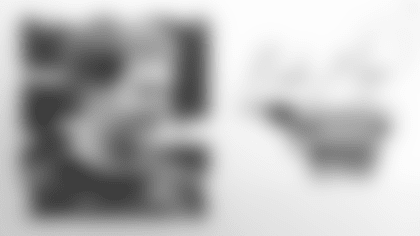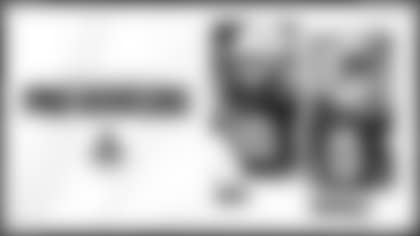The Patriots will take a mid-season bye week to recover from the first half of the season, but it's also an opportunity to do some soul-searching offensively.
New England enters its week off ranked 25th in Football Outsiders' DVOA metric on offense, which would be its lowest ranking of the Bill Belichick era if things don't improve, after finishing ninth in DVOA in Mac Jones's rookie season.
Although it's important to get healthy and rested during the bye week, the Patriots must figure out what ails them on offense and find a formula that works.
"The bye week is always a good time to physically get yourself back and then obviously mentally. And then X's and O's-wise, see what you're doing well and what you're not doing as well. I know our coaches will do a great job grinding it out, and we'll be on the same page," quarterback Mac Jones said following Sunday's win over the Colts.
The big question that the Patriots need to answer is what are we good at on offense, and how do we emphasize it more moving forward? To that end, we have a simple message: embrace the spread era in New England.
We now have two years of data and film suggesting that the quarterback, and in turn, the offense, is at its best when Jones is operating out of spread formations and in the shotgun. If Mac is the guy, start calling an offense that fits his skill set best.
| Under-Center Stats With Mac Jones | 2022 Season | NFL Rank |
|---|---|---|
| Pass YPA | 5.9 | 33rd (out of 40) |
| Rush Avg. | 3.4 | 23rd (out of 32) |
| EPA/Play | -0.18 | 29th (out of 32) |
Jones has struggled from under center even with the aid of play-action, yet the Pats are under center on 31.6% of his offensive play. This season, New England is also having issues running the football with the quarterback under center due to a banged-up offensive line and potentially the absence of a fullback, ranking 27th in expected points added per rush attempt from under center (-0.15) on the third-most attempts (172).
Before you blame it all on his current situation, this is now a two-year trend with Jones being a middling under-center passer. Last season, Mac was 20th in yards per pass attempt (7.9) and 30th in passer rating (92.4) from under center. Certainly, better than this year, but still below league average or worse. Over the last two seasons, Jones's passer rating from under center ranks 31st out of 41 qualified quarterbacks (88.9).
The new regime seemed to know that the Patriots QB preferred to operate out of the shotgun. Only 9.9% of Jones's pass attempts in his first three starts were from under center. But in his last two starts, that number nearly doubled to 17.9%. What changed? Bailey Zappe.
The Patriots rookie leads all quarterbacks in yards per pass attempt (17.0) and has a perfect passer rating off under-center drop-backs (158.3). Naturally, the Pats thought they could replicate their success with Zappe from under center with Jones, but that has not panned out.
There are several possibilities to explain why there's such a large discrepancy between the two quarterbacks from the opponent's game plan and execution, game situation, play design, and how the quarterbacks themselves carry out the fakes. Regardless, the production just isn't there for Jones.
Teams match New England's bigger personnel packages (two tight end or six OL) with heavy box counts and single-high safeties, as you'd expect them to do against run formations, and the Pats are struggling to run the ball into those heavy boxes. And with Jones, they're not getting defenses out of these looks by making them pay with play-action.
Last week, the Colts matched under-center three receiver and 12-personnel sets with a single-high safety and an extra defender in the box. Despite getting a loaded box, the Pats still opened the game with four-straight first-down runs and ran the ball on eight of their first 11 first downs. Furthermore, 17 of their first 23 plays were from under center.
In the past, we've seen Patriots quarterbacks check out of run plays when they are outnumbered in the box to attack single-high structures with pass plays. But whether it's the initial play call or a check, New England is not generating positive outcomes with under-center play-action, and that's not all on the second-year quarterback.
Here, the Pats get the same single-high coverage from Indianapolis before the snap and finally dial up some play-action. The Colts fall into a two-high coverage (quarters), but Kendrick Bourne still comes open on the deep out into the right sideline. However, right tackle Yodny Cajuste can't hold his block, and Jones is hurried into a check-down.
The Patriots are having major issues along the offensive line, mainly at right tackle, left guard, and they played the last two games without starting center and team captain David Andrews. But there are also instances where the quarterback could play better on these schemes.
New England called a 989 concept off under play-action back in Week 7. The defense falls into a Tampa-2 coverage where the middle linebacker (Roquan Smith) is carrying the middle-read route by Hunter Henry (splitting the safeties). Smith does well to carry it, but Jones should recognize the deep safety to his right cheating over Henry's route, which leaves Jakobi Meyers open down the right sideline for a big play. Instead, Mac holds on Henry's route and ultimately has to settle for another check down that Damien Harris drops.
Rather than continuing to incorporate plays that aren't working for the quarterback or his supporting cast, the Patriots coaching staff has to go all-in on running a spread system. During his time as Nick Saban's starter, Jones only threw 11 passes from under center. The Crimson Tide were a spread machine with vertical schemes and an electric RPO package that accounted for 19% of their offensive plays in their 2020 National Championship season.
Until the Patriots figure out their offensive line issues, we'll table the vertical elements they tried to incorporate earlier in the season with mixed results. But the formations and run-pass options that Mac became accustomed to at Alabama need to be their entire offense.
Over the last two weeks, the Patriots have called 21 run-pass options as they've expanded their RPO play-calling, which is a good thing. Remember the loaded box and run stuff above?
When the Patriots run from spread formations with Jones in the gun, they're getting six-man boxes with two-high safeties more often than not, and the run game is far more productive. On shotgun runs, the Pats are producing a positive EPA per play output (+0.03), 15th in the NFL, yet they've only run the ball from the gun 97 times (also 15th).
Although the RPOs aren't converting into passes much yet, the opportunities are there, and a few positive plays have found their way onto the film. Plus, the Pats still need to incorporate downfield routes off run-pass options (slants/glances, curls, seams, etc.). If they start designing more downfield RPOs off the inside run actions, now we are cooking with gas.
The run-pass options create lighter boxes and quick throws to the perimeter, which helps mask some of the deficiencies along the offensive line (fewer defenders to block in the run game, quick release). These downfield designs don't need to be overly complex like Miami's or incorporate a QB run element as they do in Philly or Baltimore. There are simple designs being used all over the league where slants and curl routes are attached rather than a screen.
From there, it's apparent that Jones is more comfortable reading the field when he's in the gun, and the numbers back that up as his yards per attempt climbs to 7.1 compared to 5.9 from under center. Remember that 989 concept where he missed Meyers down the sideline?
Here's another vertical passing play from the shotgun where Mac makes the read and throw to hit an open Henry up the seam. With four in the pattern instead of three routes, it's a different play call. But the two vertical routes against cover-two play out similarly for the QB. When the safety widens to mid-point the routes, Jones doesn't hesitate to rip the seam.
Some of the Patriots quarterback's best throws in recent weeks have also come out of empty formations, where the five-wide distribution stresses the coverage. This time, Mac sees the linebacker dropping into a help position off the line of scrimmage and throws with anticipation to Meyers on the crossing pattern on the other side of the Jets defender.
New England ran 11 drop-backs out of empty against the Jets in Week 8, and Jones produced a +0.38 EPA per play and scrambled for two first downs on third down in empty sets.
The Patriots offense is struggling for a multitude of reasons, from play design, play-calling, quarterback play, inconsistent receiver separation and spacing, and a struggling offensive line.
As they head into the second half of the season, it's clear that certain things they envisioned running heading into the year are not working for the players on the field, such as under-center schemes and deep passes that are leading to pressure, turnovers, and negative plays.
However, there is a playing style that has been statistically more productive and passes the eye test that, if embraced and expanded upon, could get this group heading in the right direction.
The Patriots need to can the throwback offense and recognize they're a spread team now.








































